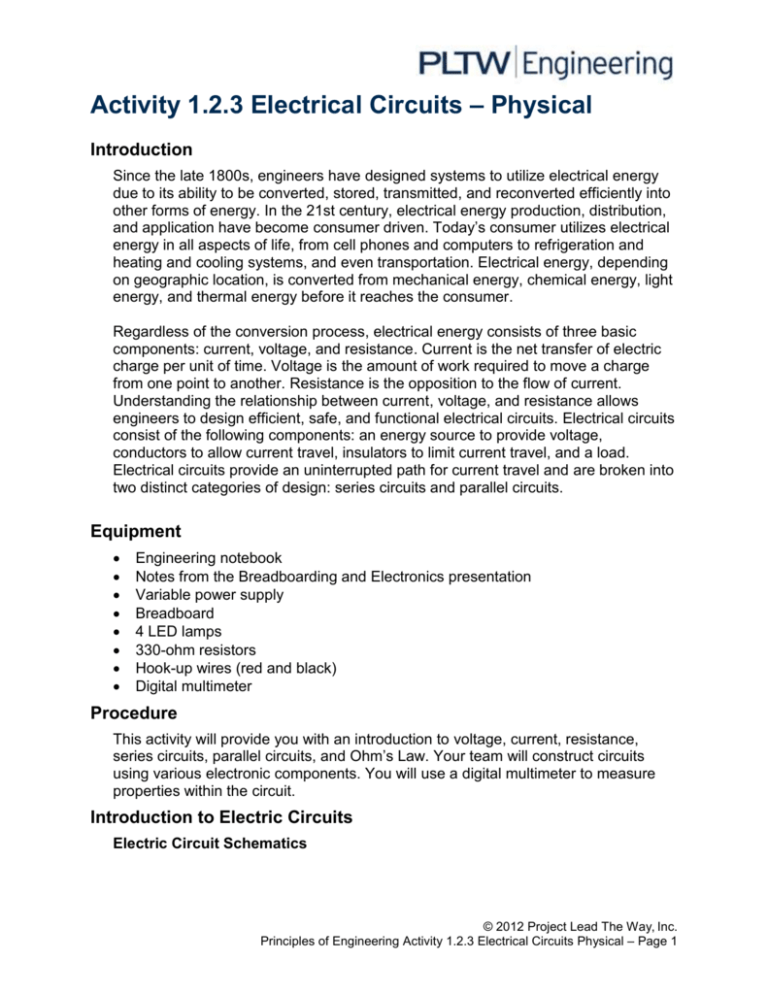


Electrical circuits provide an uninterrupted path for current travel and are broken into two distinct categories of design: series circuits and parallel circuits.

Electrical circuits consist of the following components: an energy source to provide voltage, conductors to allow current travel, insulators to limit current travel, and a load. On a camping trip, you decide to use a cordless air pump to. Understanding the relationship between current, voltage, and resistance allows engineers to design efficient, safe, and functional electrical circuits. Intro: In this activity we try finding the electrical currents of different types of circuits. Activity 1.2.3 Electrical Circuits Physical. Resistance is the opposition to the flow of current. Voltage is the amount of work required to move a charge from one point to another. Current is the net transfer of electric charge per unit of time. We designed a Google PowerPoint presentation with a background portraying our energy source. Regardless of the conversion process, electrical energy consists of three basic components: current, voltage, and resistance. We chose a energy source and started some research on what type of energy we wanted to do. Electrical energy, depending on geographic location, is converted from mechanical energy, chemical energy, light energy, and thermo energy before it reaches the consumer. Keep to these simple steps to get Activity 1 2 3 Electrical Circuits Physical ready for submitting: Get the form you require in our library of legal forms. Today’s consumer utilizes electrical energy in all aspects of life, from cell phones and computers to refrigeration and heating and cooling systems, and even transportation. In the 21 st century, electrical energy production, distribution, and application have become consumer driven. Since the late 1800s, engineers have designed systems to utilize electrical energy due to its ability to be converted, stored, transmitted, and reconverted efficiently into other forms of energy.


 0 kommentar(er)
0 kommentar(er)
